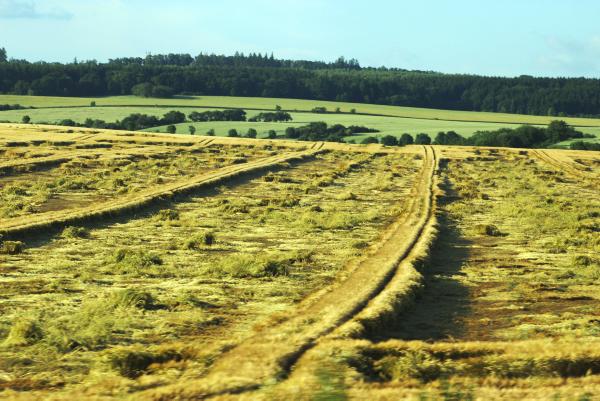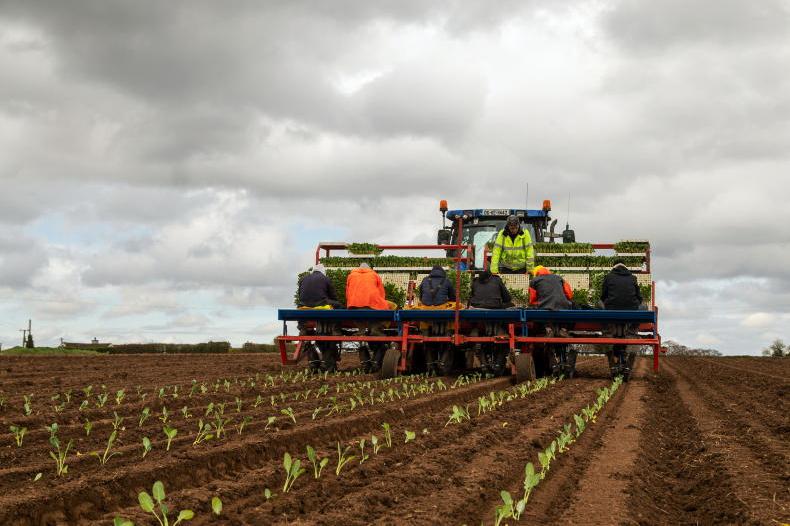The price of grain fell again last week and the quote of €134/t for green barley for harvest in the south sent a shiver down the spines of growers. For the moment at least, the price pressure remains downwards due to a big global planting and good yield expectation throughout most of the northern hemisphere. The expected consequence is big tonnage and we hope that our promising looking crops will yield well and be harvested with minimum cost. Warm, dry weather for a few weeks will help – if it comes. The problem is that many other places around Europe have equally promising expectations and this is hitting prices.
German expedition
Last week I spent some time in north Germany with journalists from different parts of the world. Virtually everyone had optimistic expectations for the coming harvest following favourable early growth patterns. No one saw any great reason why things would turn out worse than currently expected, unless things take a turn of course.
Travelling across northern Germany was interesting. There is a lot of cropped area in that region and most of it looks very good, or at least very good by the normal standards of the area. However, one thing was very obvious: lodging. There was not much lodged in total but of what was down, it was stitched. Winter barley was worst affected, followed by winter rye and then winter wheat.
My route took me from Frankfurt to Kassel initially and then east to Halle, which meant I went from what was West Germany into the former DDR, or East Germany. I travelled this same road 22 years ago and the progress is obvious. At one stage I asked myself if we had moved into the former east without knowing and indeed we had. The tell-tale sign was the presence very colourful square buildings that were formerly grey apartment blocks. They have since been renovated and made to look modern with artistic paintwork.
Crop management
There were also visible differences in the standard of crop management. The standard of husbandry and management in the former west is very high. Fields are generally much smaller, especially towards the north, and it is possible that farm size is smaller too, thus forcing good management on every square metre. Crops were uniform and meticulously clean. There was not a plant out of place – no weeds, no wild oats and no grasses. But there was some volunteer barley in wheat.
The standard of workmanship was excellent. Tram tracks were very uniform and extremely clean at the headlands. There was minimal crops loss that could not be deemed essential.
Contrast that with some fields in this country, where big chunks of crops are destroyed at ins and outs by tractors spreading and spraying. It amazes me why so much crop has to be driven over due to a lack of a system of driving and turning.
These comments apply to all crops: winter wheat and barley, winter rape, sugar or fodder beet and spring barley. Smashing crops and great growers. But as one moves from west to east there is a belt of land that must be of much lower quality. Management is certainly much lower as seen by the amount of weeds present in these crops – all crops.
The crop make-up is broadly similar to further west but the crops were much poorer and weeds thrive as a consequence. There could be fertility issues but the bigger problem may be related to soil quality.
As we moved further east and back into better land, crop quality improved again, as did husbandry. But it was second division compared to what we had seen further west. The drilling was no longer 100% parallel and gaps could be seen between some drill ruins. Tramline widths were not always equal and streaks of weeds appeared between sprayer bouts in otherwise good fields. And this held for all crops, including spring barley.
There were also signs of dodgy steering mechanics on some machines that left very wavy tram tracks.
Nice spring barley
Spring barley, or summer barley as it is called on mainland Europe, is not so common but can be seen around the countryside. Crops look nice but they are relatively light compared with the type of crops we grow here.
Crops were at or post-flowering and seemed pretty strong. There were no diseases present that I could see. They looked like safe crops but not very big crops.
Lodging
Once the crops improved the lodging returned but this time big areas of wheat were lodged as well as barley – and now the pattern of lodging was less than obvious. In the west, the pattern of lodging was much worse at ins and outs and in overlaps. Now some fields had 80-90% lodging while others had about 30%, and it was all in one area in the field.
It took me some time to twig what was happening: organic manures. This was the home of pigs, recycling of organic materials and big anaerobic digestion plants. Land quality was being improved through the use of all these materials but management had not kept pace with application.
Intensive livestock production means that some of these producers must now transport their by-product up to 250km to find an acceptable home for it. The producers pay the transport cost. Land fertility was being rebuilt but new lessons in husbandry management were now needed.
Having been in some fields, the last thing these crops need now is heavy rain. Much of this wheat looks excellent and is very clean – some mildew in a few crops but nothing serious – but it was also very soft to the feel. If we had such weak straw in this country, we would be doomed to harvesting horizontal crops. And varieties are quite tall, very clean, with lots of leaf and a big canopy to pull them down if lodging conditions prevail.
Lodged wheat in this part of the world has relevance for us, too. Much of the wheat in Germany is milling quality and widespread lodging could result in much of it being downgraded to the feed heap because of rejection for milling. And that would just increase the size of the feed grains pile, which is already more than big enough. Rain and rejection for milling are already problems elsewhere in eastern Europe.











SHARING OPTIONS